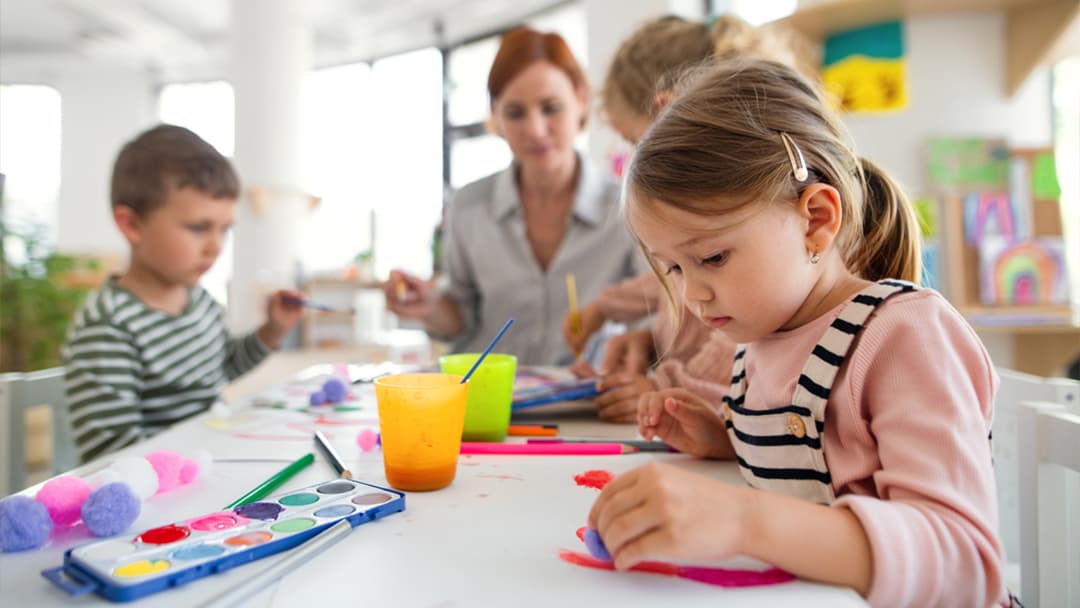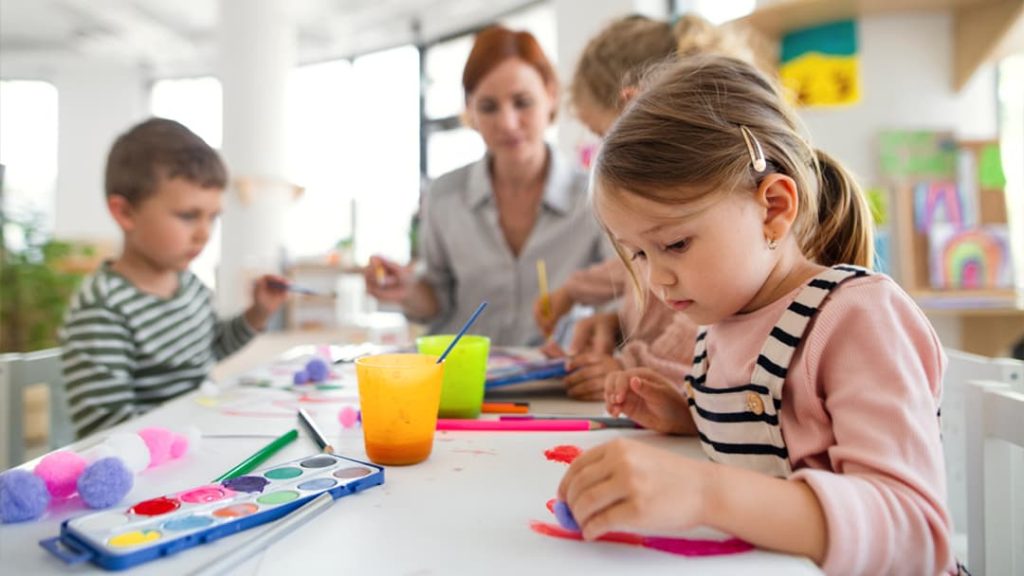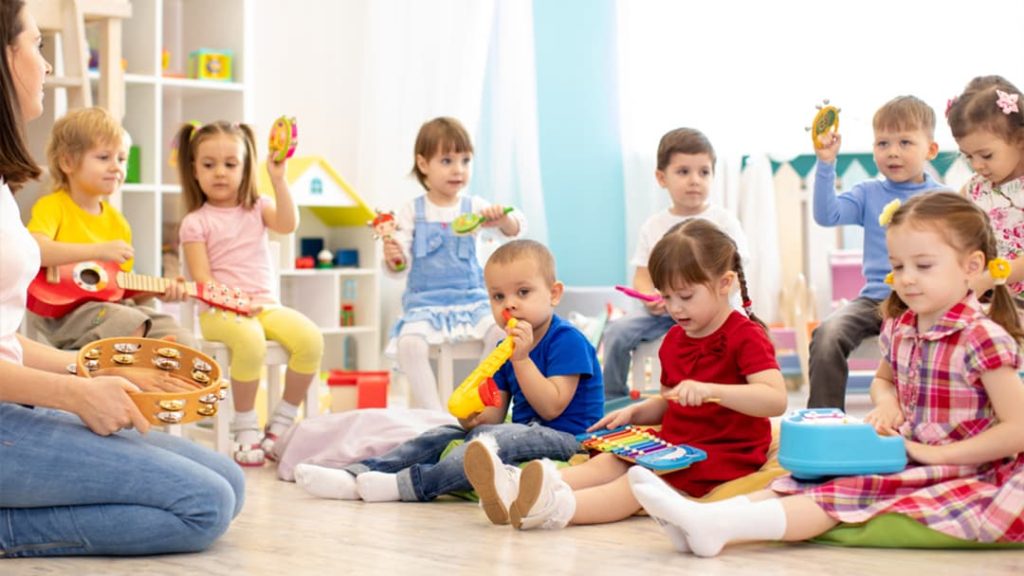
Crafting a Positive Learning Environment in a Nursery
Creating a welcoming, enriching, and positive environment in a nursery is not just about painting the walls with vibrant colours or arranging toys neatly on shelves; it’s an art that goes well beyond aesthetics. The atmosphere you cultivate profoundly impacts a child’s emotional well-being, cognitive development, and overall learning experience.
Ready to dive deep into what makes a nursery an excellent place for learning and growing? Come along as we explore the magic of creating a space that’s more than just a room but a nurturing home-away-from-home for curious little minds.
The Importance of a Positive Nursery Learning Environment
In early education, it’s not just about ABCs and 123s. Instead, it’s about nurturing a love for learning and ensuring children feel safe, comfortable, and eager to discover. A positive learning environment in a nursery fosters warmth, safety, engagement, and a sense of belonging. It contributes to the emotional well-being of the children and enhances their learning outcomes. A nursery can genuinely become a haven for little ones to explore, discover, and learn by ensuring a healthy interaction between teachers and students.
Key Ingredients for a Positive Learning Environment in a Nursery
Physical Layout and Design
The physical environment plays a pivotal role in setting the tone for learning. Using colours, lighting, and comfortable furniture can significantly impact a child’s mood and attentiveness. Bright, cheerful colours inspire positivity, and natural light stimulates alertness. The classroom layout should encourage interaction and free movement. Also, ensure to incorporate elements of nature such as plants to promote a calming effect.
Inclusion and Diversity
Every child, with their unique traits and qualities, should feel accepted and valued in the nursery. Celebrating diversity fosters a sense of belonging and inclusivity, leading to a stronger positive learning environment. Sharing stories, songs, and activities from various cultures can make children more accepting and understanding of differences.
Nurturing Relationships
Building strong relationships is at the heart of creating a positive learning environment. The bond between teachers, children, and their peers significantly impacts a child’s experience in the nursery. A nursery should provide ample opportunities for social interactions, team play, and collaborative activities.
Positive Reinforcement
Using positive reinforcement techniques helps children understand the difference between right and wrong behaviour. Praising children for good behaviour or efforts boosts their self-esteem and encourages them to repeat those behaviours. Remember, the focus should be on praising the effort, not just the outcome.
Home-Nursery Connection
A strong home-nursery connection further reinforces a positive learning environment. When parents and educators work in sync, it builds consistency for children, which is key to their learning and development. Regular communication about a child’s progress, behaviour, and needs can help to align the strategies used at home and in the nursery.
The Vital Role of Professional Development in Early Childhood Education
Cultivating a positive learning environment is no easy feat, and this is where the importance of professional development in early childhood education comes into play. Continuous professional development equips educators with the latest teaching methods, behavioural management techniques, and a better understanding of children’s developmental needs.
By staying up-to-date with current trends in early education, teachers can ensure that their approach is innovative, effective, and in line with the best practices in the industry. Such an approach guarantees they can effectively cater to each child’s unique learning style, ultimately creating a more positive and personalised learning environment.
The Importance of Routine and Structure
While spontaneity has its charm, a structured routine is critical in a nursery environment. A predictable schedule helps children understand the sequence of events and know what to expect next. This sense of predictability provides comfort, contributing to a positive learning environment in nursery settings.
- Create Consistent Routines: Implement daily routines for various activities, including playtime, mealtime, naptime, and learning sessions. This provides a sense of order and security for children.
- Maintain a Balance: While a routine is essential, be flexible enough to adapt based on children’s needs and interests. Striking a balance between structured activities and free play is necessary.
- Creating Spaces for Different Activities: Children thrive when specific areas are designated for various activities. For instance, have a reading corner, a creative zone for arts and crafts, a construction area for blocks and buildings, and a quiet zone for relaxation. This provides structure and allows children to make choices based on their interests.
- Mindful Integration of Technology: While traditional hands-on activities are vital, the careful and balanced use of technology can enhance learning experiences. Interactive digital stories, educational games, and music can make learning engaging and fun.
- Set Screen Time Guidelines: Although technology can be beneficial, limiting screen time at home and encouraging physical play is also essential.
Cultivating Emotional Intelligence
As much as cognitive development is essential in a nursery, emotional development is equally significant. Emotional intelligence in early years is a precursor to effective social interactions and overall emotional well-being.
- Teaching Emotional Skills: Help children recognise and name their feelings. Use storybooks or puppets to illustrate different emotions. Teach children appropriate ways to express their feelings and manage emotions like anger or frustration.
- Model Emotional Intelligence: Children learn by observing adults. Show them how to express emotions healthily and respond to others’ feelings with empathy and understanding.
- Outdoor Learning: Outdoor play is enjoyable and promotes physical health and motor skills. Gardening, nature walks, or simple activities like observing clouds or collecting leaves can make learning fun and meaningful.
- Incorporating Natural Elements: Use natural materials like stones, shells, or pinecones for learning activities. This can add an extra sensory dimension to children’s learning and stimulate their curiosity about the natural world.
The Power of Music and Art in Learning
Arts and music can significantly enhance the learning experience, foster creativity, improve motor skills, and make learning more enjoyable.
- Singing and Dancing: Music and movement activities are a fantastic way to break the monotony of routine. They promote language skills, coordination, and rhythm. Simple nursery rhymes or action songs can bring much joy and energy into the classroom.
- Artistic Exploration: Art is a powerful tool for self-expression and creativity. Provide a variety of art supplies and encourage free art activities. This allows children to explore different mediums and express their creativity freely.
How to Create a Positive Learning Environment in the Classroom
Now that we’ve laid down the foundations, here are some practical steps for creating a positive learning environment in the classroom:
- Set Clear Expectations: Ensure that children understand what is expected of them in terms of behaviour and learning. Use simple, child-friendly language, and remember to reinforce these expectations regularly.
- Encourage Open Communication: Promote a culture of openness where children feel comfortable expressing their thoughts, ideas, and feelings. This could be through circle time discussions, one-on-one chats, or creative outlets like drawing and storytelling.
- Promote a Growth Mindset: Instead of praising intelligence or talent, focus on effort, perseverance, and improvement. This nurtures a growth mindset, helping children to see challenges as opportunities to learn and grow.
- Incorporate Fun and Play: Learning should be enjoyable. Incorporate games, crafts, stories, and songs into the curriculum. This keeps children engaged and makes the learning process more fun and effective.
The Takeaway: Every Child Deserves a Positive Learning Environment
Establishing a positive learning environment in nursery settings is not an overnight task but a continuous journey. It requires dedication, patience, and a deep understanding of early childhood education. Every element shapes this environment, from physical design and inclusivity to nurturing relationships and professional development for educators.
Every child is unique and deserves an environment where they can feel safe, loved, and excited about learning. This is exactly what we strive to provide at Tappy Toes Nursery, ensuring that each child has the best possible start in their educational journey.
In a world where education is continually evolving, it’s our responsibility as educators and parents to ensure our children are given the best environment for learning and development. Because when children are given the right environment, they don’t just learn, they thrive. And what could be more rewarding than that?



